AWM41 1071 - [Official History, 1914-18 War: Records of Arthur G Butler:] Anonymous Narrative of a nurse in the AANS [Australian Army Nursing Service]
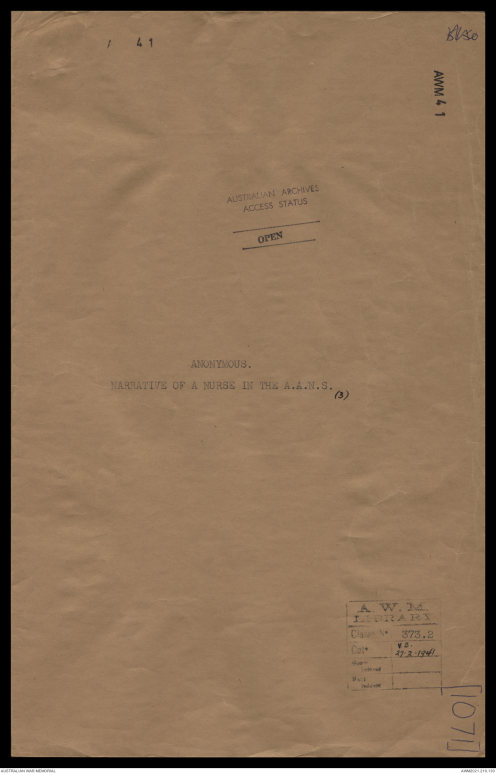
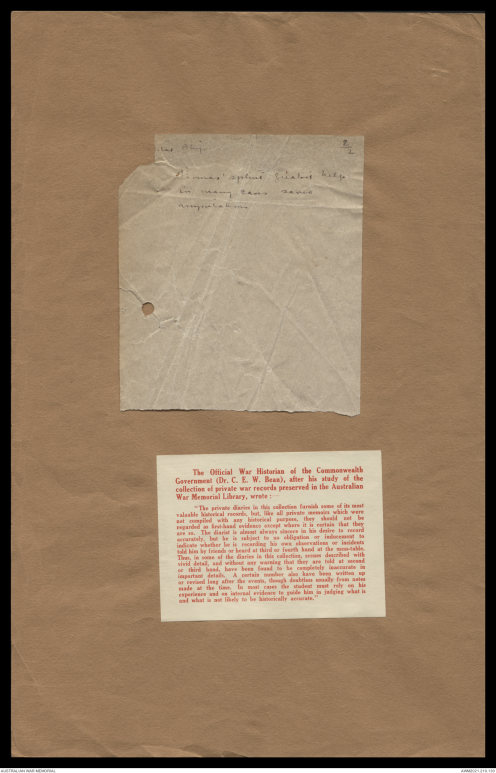
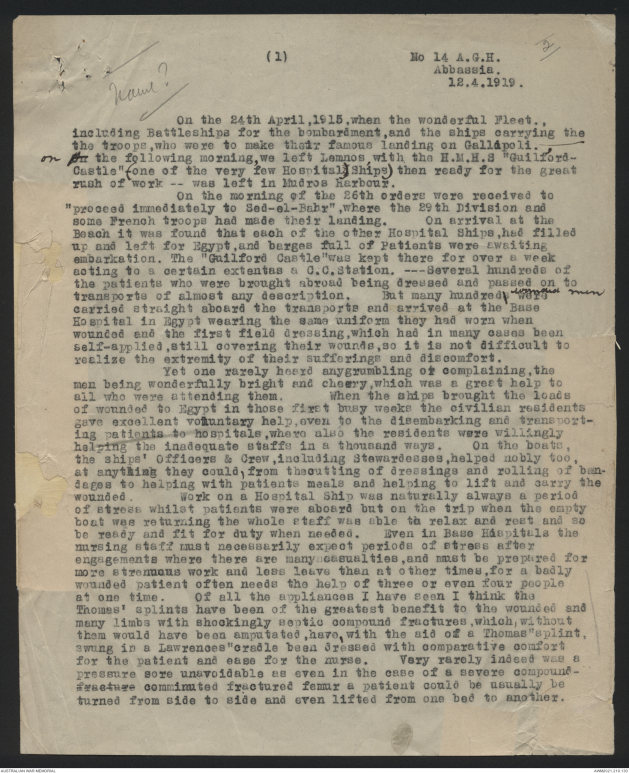
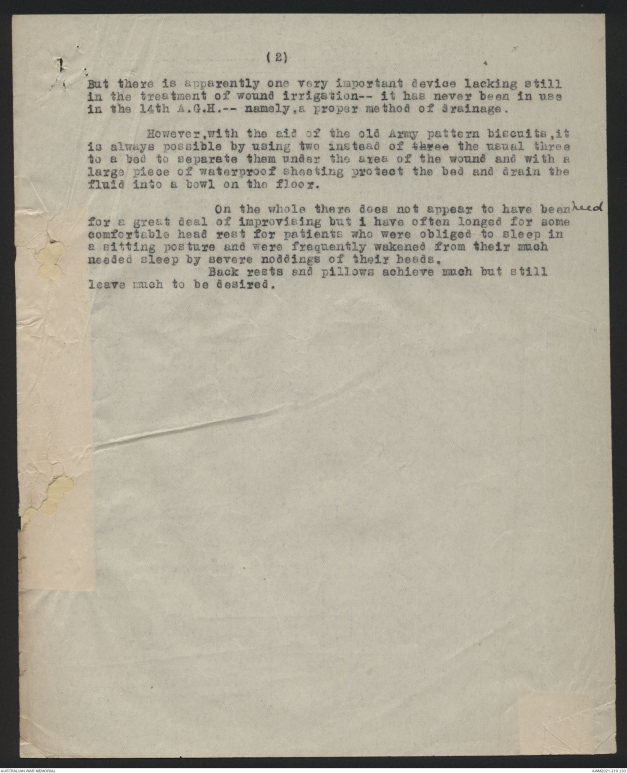
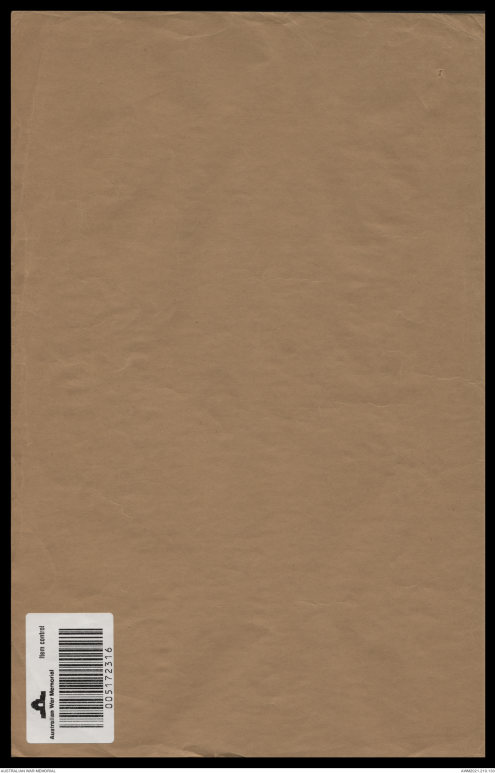
4115/50
AWM41
AUSTRALIAN ARCHIVES
ACCESS STATUS
OPEN
ANONYMOUS.
NARRATIVE OF A NURSE IN THE A.A.N.S.
(3)
A.W.M.
LIBRARY
Classn No 373.2
Catd. V.B. 27.2.1941
[1071]
ital Ships 2/2
Thomas' splint greatest help
in many cases saves
amputations
The Official War Historian of the Commonwealth
Government (Dr. C.E.W. Bean), after his study of the
collection of private war records preserved in the Australian
War Memorial Library, wrote:
"The private diaries in this collection furnish some of its most
valuable historical records, but, like, all private memoirs which were
not compiled with any historical purpose, they should not be
regarded on first-hand evidence except where it is certain that they
are so. The diarist is almost always sincere in his desire to record
accurately, but he is subject to no obligation or inducement to
indicate whether he is recording his own observations or incidents
told him by friends or heard at third or fourth hand at the
mess-table.
Thus, in some of the diaries in this collection, scenes described with
vivid detail, and without any warning that they are told at second
or third hand, have been found to be completely inaccurate in
important details. A certain number also have been written up
or revised long after the events, though doubtless usually from notes
made at the time. In most cases the student must rely on his
experience and on internal evidence to guide him in judging what is
real and what is not likely to be historically accurate."
(2)
2
No 14 A.G.H.
Abbassia.
12.4.1919.
Name?
On the 24th April, 1915, when the wonderful Fleet.,
including Battleships for the bombardment, and the ships carrying the
the troops, who were to make their famous landing on Gallipoli. -
on On the following morning, we left Lemnos with the H.M.H.S "Guilford Castle" -
(one of the very few Hospital) Ships) then ready for the great
rush of work -- was left in Mudros Harbour.
On the morning of the 26th orders were received to
"proceed immediately to Sed-el-Bahr", where the 29th Division and
some French troops had made their landing. On arrival at the
Beach it was found that each of the other Hospital Ships, had filled
up and left for Egypt, and barges full of Patients were awaiting
embarkation. The "Guilford Castle" was kept there for over a week
acting to a certain extent as a C.C. station. ---Several hundreds of
the patients who were brought abroad being dressed and passed on to
transports of almost any description. But many hundreds ∧ wounded men were
carried straight aboard the transports and arrived at the Base
Hospital in Egypt wearing the same uniform they had worn when
wounded and the first field dressing, which had in many cases been
self-applied, still covering their wounds, so it is not difficult to
realize the extremity of their sufferings and discomfort.
Yet one rarely heard any grumbling or complaining, the
men being wonderfully bright and cheery, which was a great help to
all who were attending them. When the ships brought the loads
of wounded to Egypt in those first busy weeks the civilian residents
gave excellent voluntary help, even to the disembarking and transporting
patients to hospitals, where also the residents were willingly
helping the inadequate staffs in a thousand ways. On the boats,
the ships' Officers & Crew, including Stewardesses, helped nobly too,
at anything they could, from the cutting of dressings and rolling of bandages
to helping with patients meals and helping to lift and carry the
wounded. Work on a Hospital Ship was naturally always a period
of stress whilst patients were aboard but on the trip when the empty
boat was returning the whole staff was able to relax and rest and so
be ready and fit for duty when needed. Even in Base Hospitals the
nursing staff must necessarily expect periods of stress after
engagements where there are many casualties, and must be prepared for
more strenuous work and less leave than at other times, for a badly
wounded patient often needs the help of three or even four people
at one time. Of all the appliances I have seen I think the
Thomas' splints have been of the greatest benefit to the wounded and
many limbs with shockingly septic compound fractures, which, without
them would have been amputated, have, with the aid of a Thomas" splint,
swung in a Lawrences" cradle been dressed with comparative comfort
for the patient and ease for the nurse. Very rarely indeed was a
pressure sore unavoidable as even in the case of a severe compound-
fracture comminuted fractured femur a patient could be usually be
turned from side to side and even lifted from one bed to another.
(2)
But there is apparently one very important device lacking still
in the treatment of wound irrigation -- it has never been in use
in the 14th A.G.H. -- namely, a proper method of drainage.
However, with the aid of the old Army pattern biscuits, it
is always possible by using two instead of three the usual three
to a bed to separate them under the area of the wound and with a
large piece of waterproof sheeting protect the bed and drain the
fluid into a bowl on the floor.
On the whole there does not appear to have been need
for a great deal of improvising but i have often longed for some
comfortable head rest for patients who were obliged to sleep in
a sitting posture and were frequently wakened from their much
needed sleep by severe noddings of their heads.
Back rests and pillows achieve much but still leave much to be desired.
Item control
Australian War Memorial
005172316
 Sam scott
Sam scottThis transcription item is now locked to you for editing. To release the lock either Save your changes or Cancel.
This lock will be automatically released after 60 minutes of inactivity.